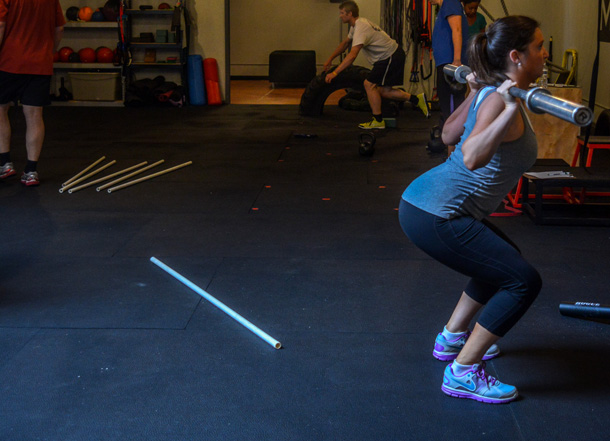
Should you ever add weight to a movement, before you can achieve full range of motion in it?
The answer is easy, right? Absolutely not.
I’m going to skip right to the punchline and say maybe the answer isn’t so absolute and it depends.
If you ask 10 trainers, you’ll get 10 answers that say you should always achieve full range of motion before you add weight. If you don’t, you’ll reinforce the pattern and make it even harder to achieve full range of motion.
However, borrowing from an article Bret Contreras published on T-Nation: “Research shows that strength training is as effective as stretching at building flexibility, due to several factors (Aquino et al. 2010, Simao et al. 2010; Morton et al. 2011, Nelson & Bandy 2004).”
If strength training, aka adding weight to a movement, increases flexiblity (range of motion) then it can not then be automatically true that adding weight to a movement will reinforce a limited range of motion.
Sometimes you will need weight in order to be able to increase the range of motion.

How do you know which to do? Test both. Test the greatest range of motion you can easily do without added weight. Then test adding weight, but subtracting whatever range of motion is necessary (if any at all) to accomplish it without weight. Whichever tests the best will get you to both greater strength and greater range of motion quickly.
Here are 3 example scenarios:
Squatting
Squat depth is often limited due to a variety of limiting factors. Here are two positions to test:
- With no added weight, squat to the most depth you can easily achieve while maintaining the same relationship between hips and shoulders. Once the shoulders start to drop, you’re going too far.
- Set up a box to a height an inch above where you can’t squat any longer. Add weight, and squat.
Deadlifting
Like the squat, the deadlift can be limited in accessible range of motion for many different reasons. Since deadlifting with no weight is impractical, the comparison will be between less weight and more weight.
- Set a bar in a rack to the height you can easily deadlift it from. This may be the standard ~9″ that 45s place the bar, or higher. The position you’re generally looking to maintain is a good, strong alignment with minimal bending at the spine. Using an appropriate amount of weight, test.
- Raise the rack height several inches, and add 10-15% more weight. Test again.
Push-Up
The push-up is a good example of a bodyweight exercise that is often too hard for people to perform with full range of motion immediately. At my facility, we scale it using a variety of implements to change the leverage. Here are two things to test:
- Setup a bar or box at a height where you can perform a perfect push-up with a nice solid plank body position and lowering yourself all the way to your chest touching the bar or box. Test.
- Lower the height a bit, so that you can still maintain a good plank position, but you can’t easily lower chest to touching the box. Keep it within the range you can easily perform. Test this.
As is always the case, the better testing option will net you better results. These examples are just starting points to get you thinking. Play with this idea, and you’ll see for yourself how much your results improve.







